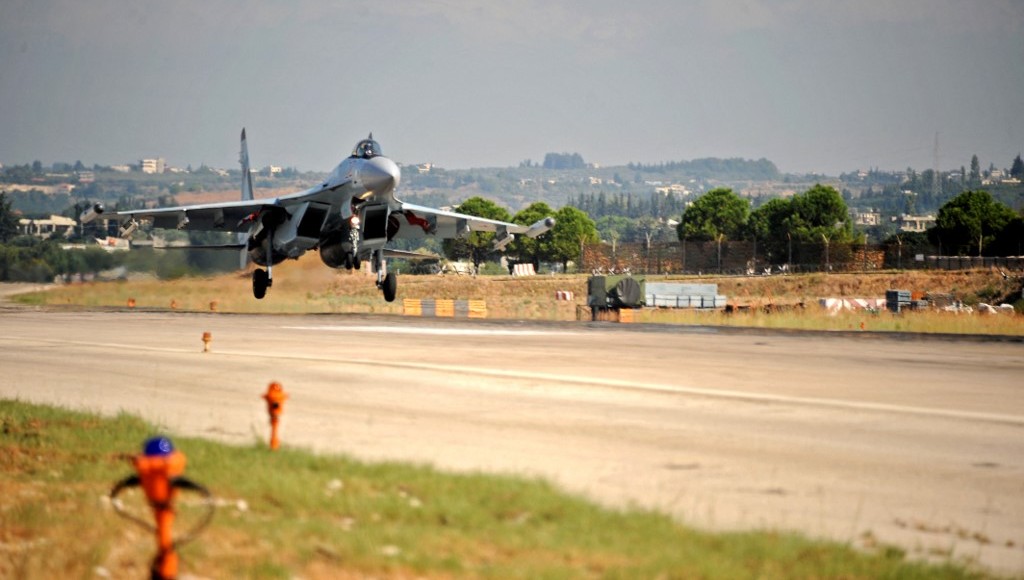Fatih Yurtsever*
Turkey was removed from the F-35 Joint Strike Fighter project by the United States after it purchased the S-400 air defense system from Russia. To eliminate the lack of fighter jets due to the inability to obtain F-35s, Turkey requested 40 F16 Viper Block 70/72 series aircraft from the US. However, given the tension in Turkish-American relations and Countering America’s Adversaries Through Sanctions Act (CAATSA) sanctions, the sale of F-16s to Turkey is not currently possible in the short term. While F-16 negotiations between Turkey and the United States are continuing, Russia claimed that they have agreed to local production in Turkey of some parts of the S-400 system.
Dmitriy Shugayev, director of Russia’s Federal Military-Technical Cooperation Service (FSVTS), stated that Russia was ready to assist Turkey in producing its 5th generation fighter jet, the TF-X. “They have a program to develop TF-X fighter jets. As far as I know, things aren’t going well with the engine. However, if they make a request, we will help,” he said. Additionally, Shugayev stated that they hoped Turkey would be interested in the Su-35 aircraft due to the problems experienced with the US regarding F-16 and F-35 procurement.
“The problems experienced in the procurement of the F-35 and F-16 from the US shows that Turkey will most likely direct its attention to our military aviation systems. [President Recep Tayyip] Erdogan has shown great interest in the Su-35,” Shugayev said. He also mentioned that while the Su-57 is a priority aircraft for the Russian Armed Forces, it also has high export potential.
In this case, if the US doesn’t approve Turkey’s F-16 request, would Russian jets be a good match for Turkey? Can the Turkish Air Force operate these aircraft efficiently?
The training, logistics and force deployment of the Turkish Air Force were built on NATO standards. The majority of the aircraft and ammunition used by the Turkish Air Force is US-oriented. In addition the air force is 90 percent dependent on the United States for spare parts supply. Since the Turkish air bases are built in accordance with NATO standards, the Turkish Air Force can quickly transfer aircraft, depending on the military-political situation. In this way, the ability known as operational independence is achieved.
Operational independence will be lost if Russian aircraft are acquired because the structure of the base where Russian aircraft will be deployed has to be redesigned according to Russian standards. In other words, planes can only be employed at that airbase. Therefore, setting up a double logistics (NATO and Russian) system for each base is not a cost-effective solution. On the other hand, although Russian warplanes are less expensive, operational and maintenance cost are relatively high. For example, while the life of an F-16 is 12,000 hours, the engine life of a Su-35 is 4,000 hours, and the fuselage life is 6,000 hours.
The weapons inventory of the Turkish Air Force has been created to comply with NATO standards. Domestically developed missiles such as the Gökdoğan, Bozdoğan and SOM (Stand-off Missile) are designed to be launched from NATO-certified aircraft. The Gökdoğan and Bozdoğan air-to-air missiles are interoperable with the AU-129 launcher, which launches US-made AIM 120 and AIM-9 missiles. To arm Russian aircraft with such indigenous missiles, they must undergo software and hardware modifications. It is unclear if the Russians would cooperate on this issue because when India requested approval to equip the Russian-made fighters they purchased with French air-to-air missiles, the Russians refused.
NATO data links such as LINK 16, LINK 11 B and Link 4 are used by the Turkish Air Force to share the recognized air picture and track data between aircraft, AWACS, ground-based airborne radars, and the Combined Air Operations Center. Aircraft purchased from Russia would not be included in the existing data network.
In recent years the undeniable contribution of technical and operational knowledge transferred from NATO to the Turkish military industry’s improvement and progress is indisputable. As the concrete facts above demonstrate, purchasing jets from Russia is not feasible without considering a fundamental reorganization of the Turkish Air Force.
Turkey’s general attitude is to get closer to Russia when having a political dispute with the United States. This tactic sometimes pays off.
For instance the United States imposed an arms embargo on Turkey on February 5, 1975, in response to Turkey’s intervention in Cyprus. The sale of spare parts for US-made weapons systems to Turkey, either directly or indirectly through NATO countries, was banned. After the embargo decision, Turkey suspended the 1969 Defense Cooperation Agreement by sending a note to the United States on July 25, 1975 announcing that it had taken control of American bases and facilities in its territory, excluding İncirlik Air Base, which is regarded as a critical base for the United States to deploy nuclear bombs in the region. Bülent Ecevit’s appointment as prime minister on January 5, 1978 increased the prominence of his anti-US rhetoric in Turkish foreign policy. US President Jimmy Carter’s efforts to keep Turkey away from the Soviet Union resulted in lifting the embargo on September 26, 1978.
Turkey is currently attempting to convince the United States to sell it F-16s, following a similar strategy in the 1970s. Only time will tell whether this strategy succeeds in convincing the United States to sell it the F-16s. However, it is a fact that the Turkish Air Force’s aircraft requirements cannot be met by warplanes purchased from Russia at the moment.
* Fatih Yurtsever is a former naval officer in the Turkish Armed Forces. He is using a pseudonym out of security concerns.



